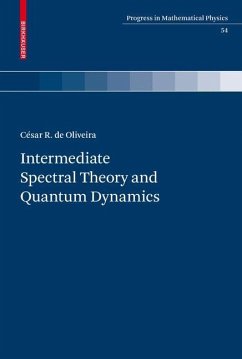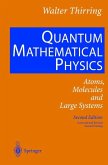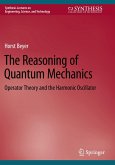The spectral theory of linear operators in Hilbert spaces is the most important tool in the mathematical formulation of quantum mechanics; in fact, linear ope- tors and quantum mechanics have had a symbiotic relationship. However, typical physicstextbooks on quantum mechanics givejust a roughsketch of operator t- ory,occasionallytreating linear operatorsas matricesin ?nite-dimensional spaces; the implicit justi?cation is that the details of the theory of unbounded operators are involved and those texts are most interested in applications. Further, it is also assumed that mathematical intricacies do not show up in the models to be d- cussedorareskippedby heuristicarguments. Inmanyoccasionssomequestions, such as the very de?nition of the hamiltonian domain, are not touched, leaving an open door for controversies, ambiguities and choices guided by personal tastes and ad hoc prescriptions. All in all, sometimes a blank is left in the mathematical background of people interested in nonrelativistic quantum mechanics. Quantum mechanics was the most profound revolution in physics; it is not natural to our common sense (check, for instance, the wave-particle duality) and the mathematics may become crucial when intuition fails. Even some very simple systemspresentnontrivialquestionswhoseanswersneedamathematicalapproach. For example, the Hamiltonian of a quantum particle con?ned to a box involves a choice of boundary conditions at the box ends; since di?erent choices imply di?erentphysicalmodels,studentsshouldbeawareofthebasicdi?cultiesintrinsic tothis(inprinciple)verysimple model,aswellasinmoresophisticatedsituations. The theory of linear operators and their spectra constitute a wide ?eld and it is expected that the selection of topics in this book will help to ?ll this theoretical gap. Ofcoursethisselectionisgreatlybiasedtowardthepreferencesofthe author.
From the reviews:
"The aim of Intermediate Spectral Theory and Quantum Dynamics is to provide advanced undergraduate and graduate students with this understanding of the mathematical intricacies of non-relativistic quantum mechanics of a single particle. ... a concise introduction to the spectral theory of unbounded operators ... . ends with a comprehensive bibliography which contains references to the original literature and further reading and an extensive index of the material presented. ... I have found this book an interesting read which I will consult in future ... ." (Jörg Bernhard Götte, Contemporary Physics, Vol. 52 (3), May-June, 2011)
"The book gives an introduction to spectral theory on the graduate or advanced undergraduate level. ... The variety of topics is remarkably large for a book at the textbook level, and also some recent results are included. ... In conclusion, Intermediate spectral theory and quantum dynamics is a mostly complete and very readable introduction to this classical area of mathematics. Students will surely appreciate the many examples and exercises." (Rupert L. Frank, Mathematical Reviews, Issue 2011 m)
"The aim of Intermediate Spectral Theory and Quantum Dynamics is to provide advanced undergraduate and graduate students with this understanding of the mathematical intricacies of non-relativistic quantum mechanics of a single particle. ... a concise introduction to the spectral theory of unbounded operators ... . ends with a comprehensive bibliography which contains references to the original literature and further reading and an extensive index of the material presented. ... I have found this book an interesting read which I will consult in future ... ." (Jörg Bernhard Götte, Contemporary Physics, Vol. 52 (3), May-June, 2011)
"The book gives an introduction to spectral theory on the graduate or advanced undergraduate level. ... The variety of topics is remarkably large for a book at the textbook level, and also some recent results are included. ... In conclusion, Intermediate spectral theory and quantum dynamics is a mostly complete and very readable introduction to this classical area of mathematics. Students will surely appreciate the many examples and exercises." (Rupert L. Frank, Mathematical Reviews, Issue 2011 m)








